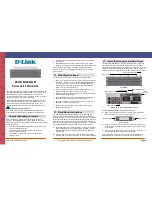
889-3819-00
MMU2-1600GE series Operations Manual Rev Apr 2020 Page
8
of 51
from the Controller Time setting by five (5) or more seconds, the Real Time Clock will be synchronized
to the Controller clock and an entry will be made to the Time Change Log.
2.
External Time Source (i.e. laptop computer) - The Real Time Clock setting can be modified through the
use of the RaeComM software. Connection to the laptop computer is made via the COMM PORT serial
connector or optional Ethernet connector on the front of the monitor. NOTE: Whenever the monitor is
connected to an operational SDLC bus, any time setting entered via the serial port will be overwritten by
the Controller Time setting.
3.
Front Panel - The Real Time Clock setting can be modified through the front panel. NOTE: Whenever
the monitor is connected to an operational SDLC bus, any time setting entered via the front panel will be
overwritten by the Controller Time setting.
If it is necessary to change the Real Time Clock setting in a monitor that is being used in a NEMA TS 2 Cabinet
Assembly, change the time setting on the cabinet controller. The time change will be broadcast to the monitor
through the SDLC port.
2.4.9
UP TIME ACCUMULATOR
The monitor has an Up Time Accumulator that keeps track of the total amount of time that the monitor has been
powered up since it was manufactured. It is saved in the format of Years, Months, Days, Hours, Minutes, and
Seconds. The MMU-1600G warranty coverage is valid for a total accumulated Monitor Up Time of two (2) years.
Tracking and recording the total time that the unit was in service provides an accurate means of validating any
potential warranty claims.
2.4.10
CONFIGURATION MONITORING (BEEPING MONITOR)
The monitor checks all configuration settings for changes once each second. If a change is found, an audible
buzzer will start beeping to indicate that a configuration setting has changed except when the monitor is in one of
the configuration screens. This is to keep the buzzer from being too annoying when you know you are making
changes. However, if you leave the configuration menu the monitor will start beeping. If the change is undone,
the beeping will stop. No fault monitoring configuration changes are implemented until the front panel reset
pushbutton is pressed and held for five (5) seconds or the changes are saved using the Fault Configuration Menu.
At that time five quick confirmation beeps will be heard, the new settings will be implemented, and a
Configuration Change log entry made.
The following configuration settings are monitored: Programming Card jumpers, Type Select input, Factory
Options, Dual Indication / Field Check, Per Channel Red Enables, Flashing Don’t Walk Monitoring, Flashing
Yellow Arrow Left Turns, Co-Channels, Thresholds, Logging Enables, Disable Local Flash, Modified CVM
Latch, External Watchdog Enable, Type 16 Only, and Buzzer Disable.
On power up and any time the program card is changed the configuration stored on the program card is compared
to the configuration stored in the monitor. If they do not match the user is prompted to choose which data set to
use. If the program card is selected, the configuration settings on the card will be copied into the monitor. If the
monitor is selected, the configuration settings on the program card are overwritten with the current monitor
configuration. All user information (Ethernet settings, Location, Location ID, and Agency ID) as well as fault
monitoring settings are copied. See Section 4.10
for front panel display during selection of configuration source.
2.4.11
FACTORY SETTINGS
The monitor is configured at the factory during final test. Data set at the factory includes: Model Number, Serial
Number, Manufacture Date, Real Time Clock setting, Support for Flashing Greens, Enhanced Support of Econolite
Controllers, Support for a Diagnostic LCD. The Up Time Accumulator is initialized to zero prior to final testing.
Changes to Support for Flashing Greens, Enhanced Support of Econolite Controllers, and Support for a Diagnostic
LCD are logged in the configuration log.
2.4.12
USER UNIT INFORMATION
The monitor has non-volatile memory that can be used to store the following user unit information: 40 character
Location ID, 4 character Unit ID, and 5 character Agency ID. All of these IDs can consist of any alpha-numeric
characters. Upper and lower case characters can be used but all lower case will be displayed as uppercase on the
front panel graphic display.
2.5
FAULT MONITORING
2.5.1
CONFLICT MONITORING
Configuration:
The jumpers installed on the Program Card determine permissive (non-conflicting) channels. A
jumper in the row labeled “2” and the jumper hole pair labeled “6” would make Channels 2 and 6 permissive with
each other. This is a two-way relationship. If channel 2 is programmed as permissive with channel 6 then channel
6 is automatically permissive with channel 2. The testing defaults for this feature are determined by the jumpers
installed on the program card. Typically no jumpers are installed during automated testing.
Test Preformed:
While a channel has a Green, Walk, or Yellow display active, the channel is tested to see if a
non-permissive channel has a Green, Walk, or Yellow display active at the same time. If concurrently active
















































